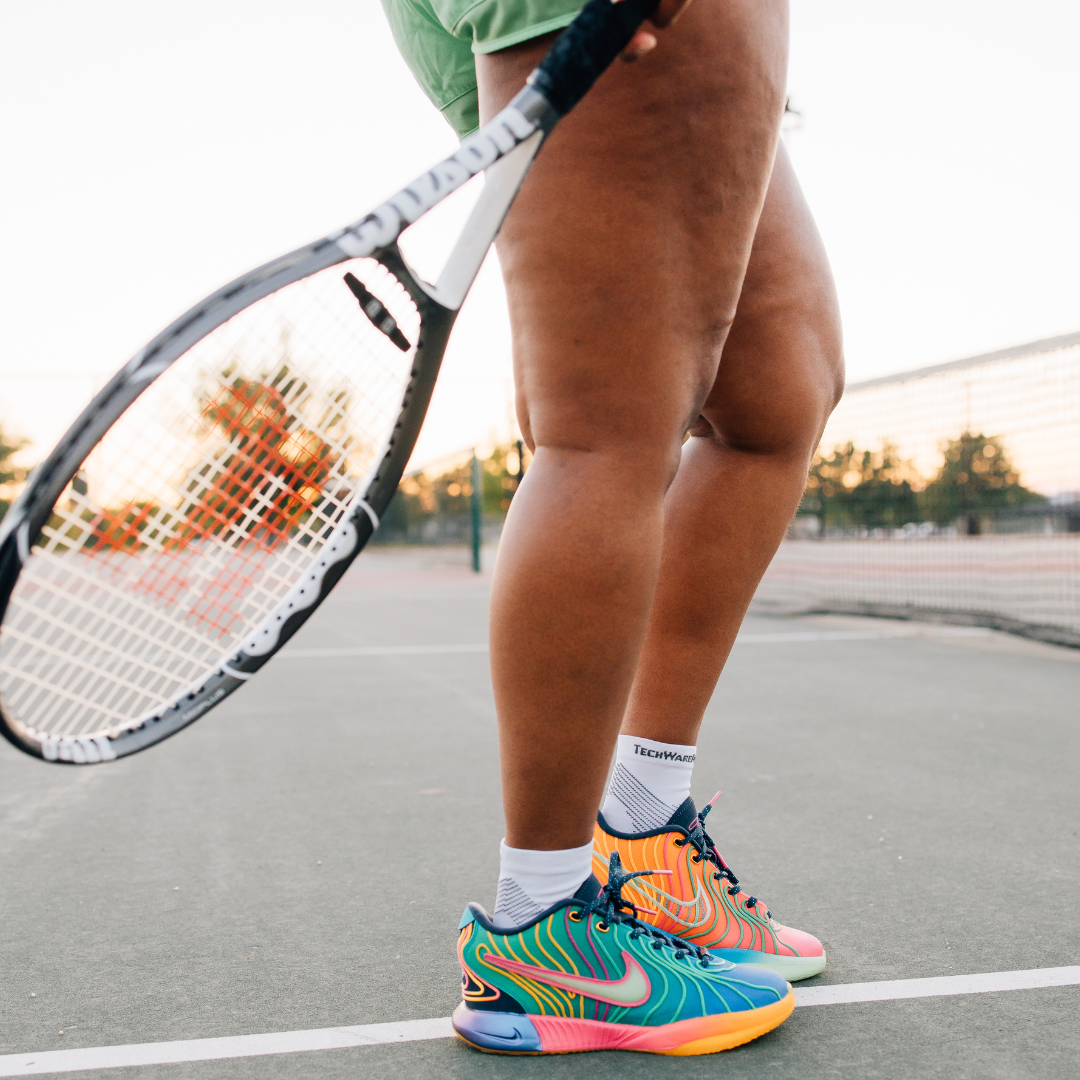
You've heard about compression gear and you're wondering what all the hype is about. Whether you're an athlete, recovering from an injury, or just looking for a little extra support, compression clothing has become increasingly popular in recent years.
From socks and sleeves to full-body suits, these snug-fitting garments claim to improve circulation, reduce muscle fatigue, and enhance performance. But with so many options and claims out there, it's natural to have questions.
In this article, we'll tackle some of the most common FAQs about compression gear to help you decide if it's right for you.
1. What exactly is compression gear?
Compression gear is a type of athletic clothing designed to apply gentle pressure to specific areas of the body. The tight, stretchy material is meant to increase blood flow and oxygen delivery to the muscles, which proponents claim can improve performance and recovery.
Compression garments come in various styles, from sleeves and socks to full-body suits, and can be worn during exercise or as part of a recovery routine.
2. How does compression gear work?

The science behind compression gear is based on the principle of graduated compression.
This means that the garment applies the most pressure at the extremities (like the ankles or wrists) and gradually decreases pressure as it moves up the limb.
This graduated compression is thought to improve venous return, which is the process of blood flowing back to the heart from the extremities.
3. What are the potential benefits of wearing compression gear?
Proponents of compression gear claim a range of potential benefits, including:
- Improved circulation and oxygenation of the muscles
- Reduced muscle fatigue and soreness
- Faster recovery from exercise or injury
- Improved proprioception (body awareness) and stability
- Increased endurance and performance
4. Is compression gear only for athletes?

While compression gear is commonly used by athletes and fitness enthusiasts, it can also be beneficial for non-athletes in certain situations.
For example, people who spend long periods of time sitting or standing, such as office workers or flight attendants, may find that compression socks or tights can help alleviate discomfort and swelling in the legs.
5. Are there any risks or downsides to wearing compression gear?
While compression gear is generally considered safe when worn properly, there are a few potential downsides to be aware of:
- Discomfort or skin irritation from the tight fit
- Restricted movement or range of motion
- Overheating or excessive sweating
- Improper fit or sizing, leading to ineffective compression
6. How do I choose the right compression gear?
When selecting compression gear, it's important to consider the intended use, level of compression, and fit. For example, if you're using compression gear for recovery, you may want a lower level of compression compared to gear intended for high-intensity exercise. Additionally, proper sizing is crucial to ensure the garment applies the correct amount of pressure.
7. Do I need a prescription for compression gear?
In most cases, no prescription is required for compression gear intended for athletic or recovery purposes. However, if you're using compression stockings or socks for medical reasons, such as treating varicose veins or lymphedema, a prescription from a healthcare provider may be necessary.
8. How often should I wear compression gear?

There are no hard and fast rules regarding how often to wear compression gear, as it largely depends on your individual needs and preferences.
Some athletes may wear compression gear during every workout or competition, while others may reserve it for recovery days or long-distance events.
9. Can compression gear be worn overnight?
While it's generally safe to wear compression gear overnight, it's important to ensure that the garment isn't too tight or restrictive. Compression socks or sleeves that are too tight can potentially cut off circulation or cause discomfort.
If you plan to wear compression gear overnight, choose a garment with a lower level of compression and monitor for any signs of discomfort or restricted blood flow.
10. How do I care for and maintain compression gear?
Proper care and maintenance are essential to ensure the longevity and effectiveness of your compression gear. Most compression garments should be hand-washed or machine-washed on a gentle cycle with mild detergent.
Avoid using fabric softeners, as they can break down the compression fibers over time. Additionally, it's important to follow the manufacturer's drying instructions to prevent shrinkage or damage to the material.
11. Can compression gear be worn during pregnancy?
While compression gear is generally safe for most people, it's important to consult with your healthcare provider before wearing it during pregnancy. Some healthcare professionals may recommend compression stockings or socks to help alleviate swelling or improve circulation, but it's essential to ensure that the garment is properly fitted and not too tight.
12. Can compression gear help with injury recovery?
 Many athletes and healthcare professionals believe that compression gear can aid in injury recovery by promoting better circulation and reducing swelling and inflammation.
Many athletes and healthcare professionals believe that compression gear can aid in injury recovery by promoting better circulation and reducing swelling and inflammation.
It's important to follow your healthcare provider's recommendations and use compression gear as part of a comprehensive recovery plan that may also include rest, ice, compression, and elevation (RICE).
13. Is compression gear effective for reducing cellulite?
Some compression garments, particularly those designed for the thighs and buttocks, claim to help reduce the appearance of cellulite.
While compression may temporarily smooth the skin's surface, there is limited scientific evidence to support the long-term reduction of cellulite through compression alone.
For more significant and lasting results, a combination of lifestyle changes, such as diet and exercise, may be more effective.
14. Can compression gear be worn for everyday activities?
While compression gear is primarily designed for athletic or medical purposes, some people choose to wear compression garments, such as socks or leggings, for everyday activities.
This can be especially beneficial for individuals who spend long periods of time on their feet or have circulation issues. However, it's important to ensure that the compression level is appropriate for your activity level and not too restrictive for extended wear.
15. How long does compression gear typically last?
The lifespan of compression gear can vary depending on the quality of the material, frequency of use, and proper care and maintenance. Generally, high-quality compression garments can last for several months to a year with regular use and proper care.
It still important to inspect your compression gear regularly for signs of wear and tear, such as stretched-out or loose fibers, as this can compromise the garment's effectiveness.

In Conclusion...
Compression gear has become a popular choice for athletes, fitness enthusiasts, and individuals seeking additional support and recovery benefits.
While the science behind compression gear is still evolving, many users report positive experiences in terms of improved circulation, reduced muscle fatigue, and enhanced recovery.
However, it's important to choose the right compression gear for your needs, ensure proper fit and sizing, and follow care and maintenance instructions to maximize the garment's effectiveness and longevity. Check out our compression products to help you find relief that works for you!
As with any new fitness or recovery tool, it's always a good idea to consult with a healthcare professional, especially if you have any underlying medical conditions or concerns.


Comments (0)
Back to Be Active - Stay Active